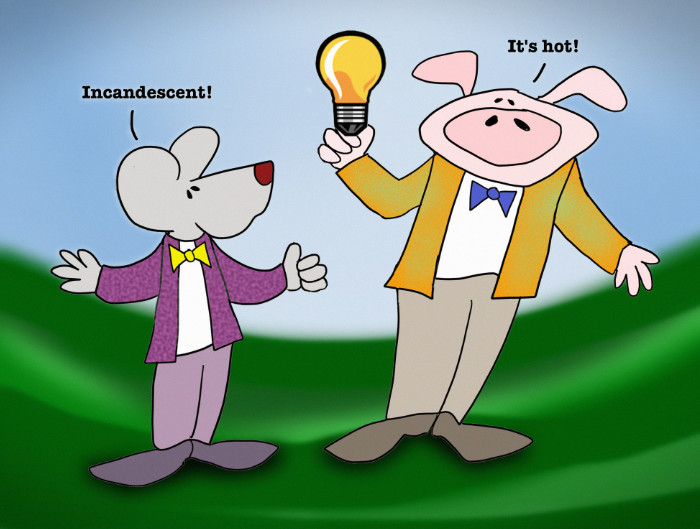When we have an idea, it is symbolized by a little light bulb over our heads. Yes, the light flipped on, and now we can see.
This is, in part, thanks to Thomas Edison. It was on this date, January 27, 1880, when Edison patented the electric incandescent lamp.
What exactly is incandescence?
It is the emitting of light as a result of being heated. In this case, electricity heats a filament within the lightbulb, and it glows white-hot as a result of that electrical current passing through it.
It is somewhat remarkable that his light bulb design from the late 1800s is pretty much what is still being used today.
Purportedly, Edison came up with that familiar glass enclosure we all know, love, and joke about.
How many psychiatrists does it take to change a light bulb?
Only one, but the bulb has to really want to be changed.
Sorry, I couldn’t resist. Anyway. Edison devised the bulb we now use to hold that burning hot metal filament with electricity running through it. The name for that standard shape is called an A-type bulb. It is so fool-proof that no one has come up with a better design since Edison produced the first commercially practical model in 1897.
For many reasons, that bulb shape is the most efficient, least expensive, and easiest to produce.
It is also incredible that we kept using that incandescent bulbs for so long. It’s only been since the 1990s that other lightbulb styles have moved into the picture.
Things such as CFL (compact fluorescent lamp) and LED (light-emitting diode) bulbs.
But take a good look at incandescents because my guess is they will be phased out eventually due to environmental issues. Incandescent light bulbs are very inefficient in their use of electricity.
Here’s the thing. A typical incandescent light bulb gives us about 750 to 2,000 hours of light. By comparison, a screw-in compact fluorescent bulb will provide 8,000 to 10,000 hours. But the big winner is the LED bulb. They can last 40,000 to 50,000 hours. That means 2,083 days. Or 69 months. Or almost six years.
But who’s counting?
One more note about the history of the bulb. Edison wasn’t the master behind the idea. In fact, he took over a lot of people’s ideas when it came to inventions and claimed them as his own. Like the lightbulb, motion pictures, the phonograph, and more.
The real guys behind the bulb were Henry Woodward, a medical student, and his partner, Mathew Evans, a hotel keeper who filed a Canadian patent application on an electric light bulb. July 24, 1874. The patent was granted on August 3, 1874, as Canadian patent number 3,738. But, Edison approached them and convinced them to sell the patent to him. I don’t know how much they made, but Thomas Edison was a wealthy man as a result of his business dealings. The modern, inflation-adjusted equivalent of his net worth is $170 million. Shiny bright, I suppose.
So, there it is. The light bulb.
I’m just trying to shine a little light on the subject for you.
======
May it be a light to you in dark places, when all other lights go out.
― J.R.R. Tolkien, The Fellowship of the Ring
=====
To love beauty is to see light.
— Victor Hugo
=====
Light tomorrow with today!
— Elizabeth Barrett Browning
=====
White hot light. That bulb.
